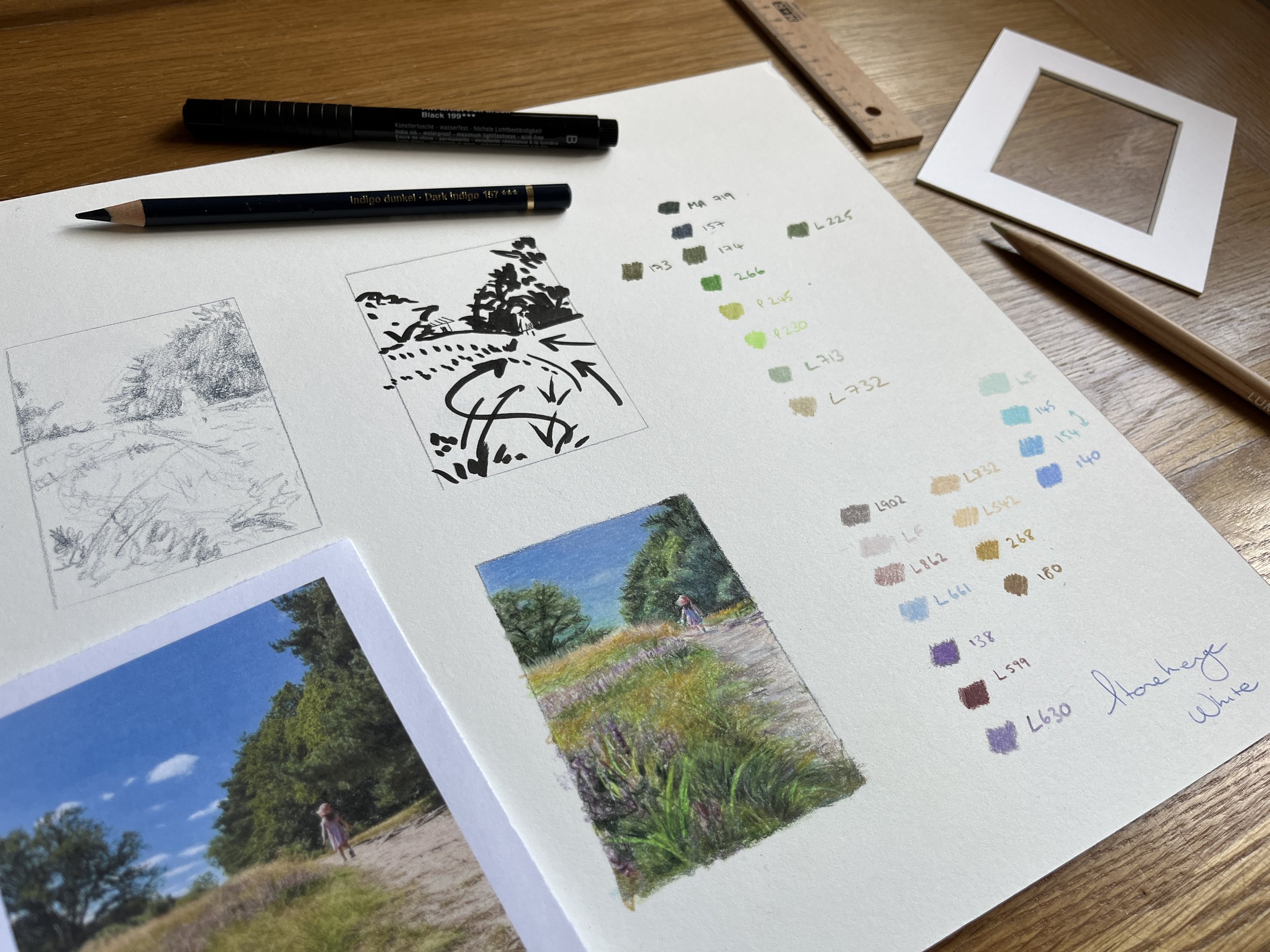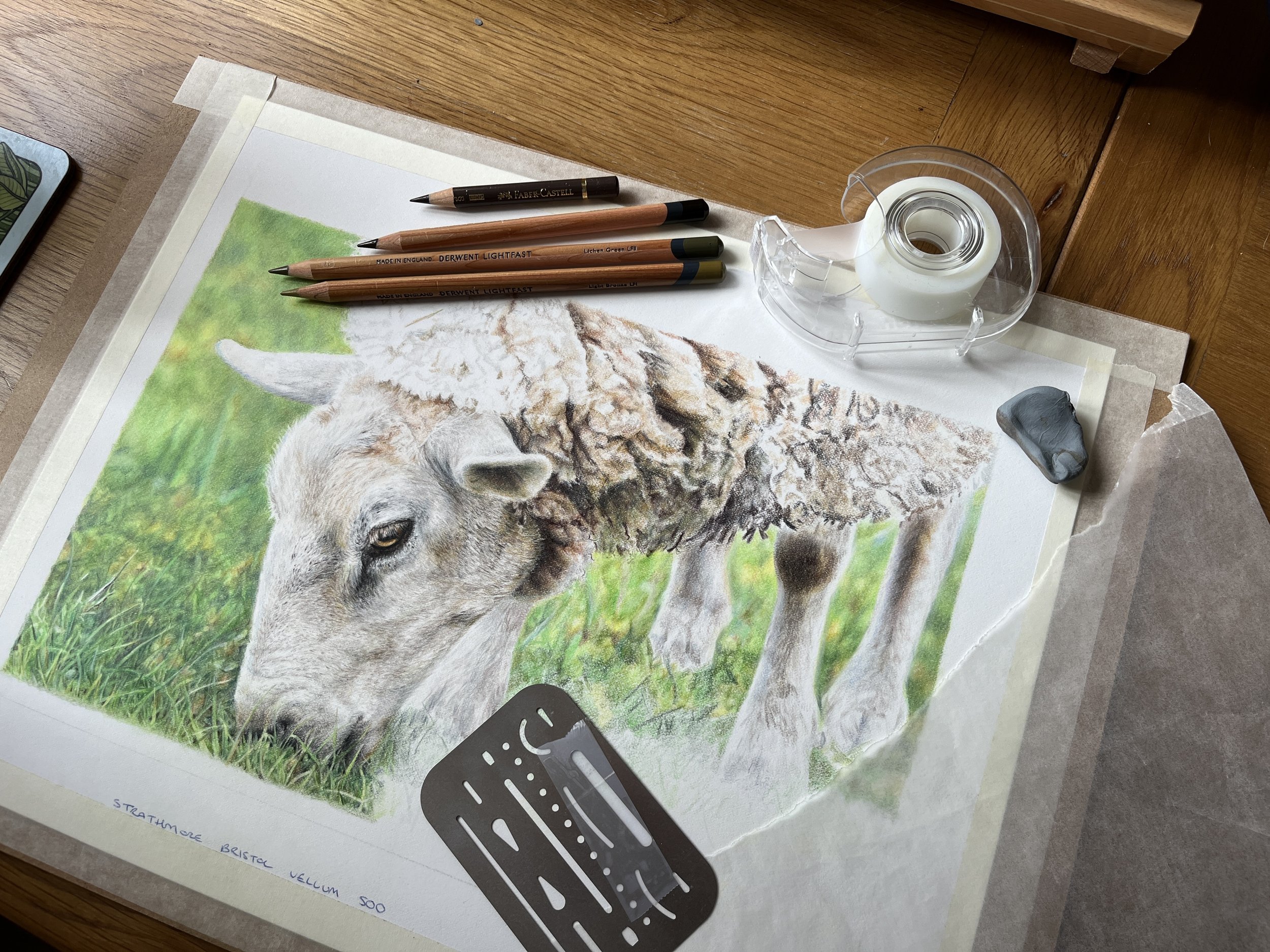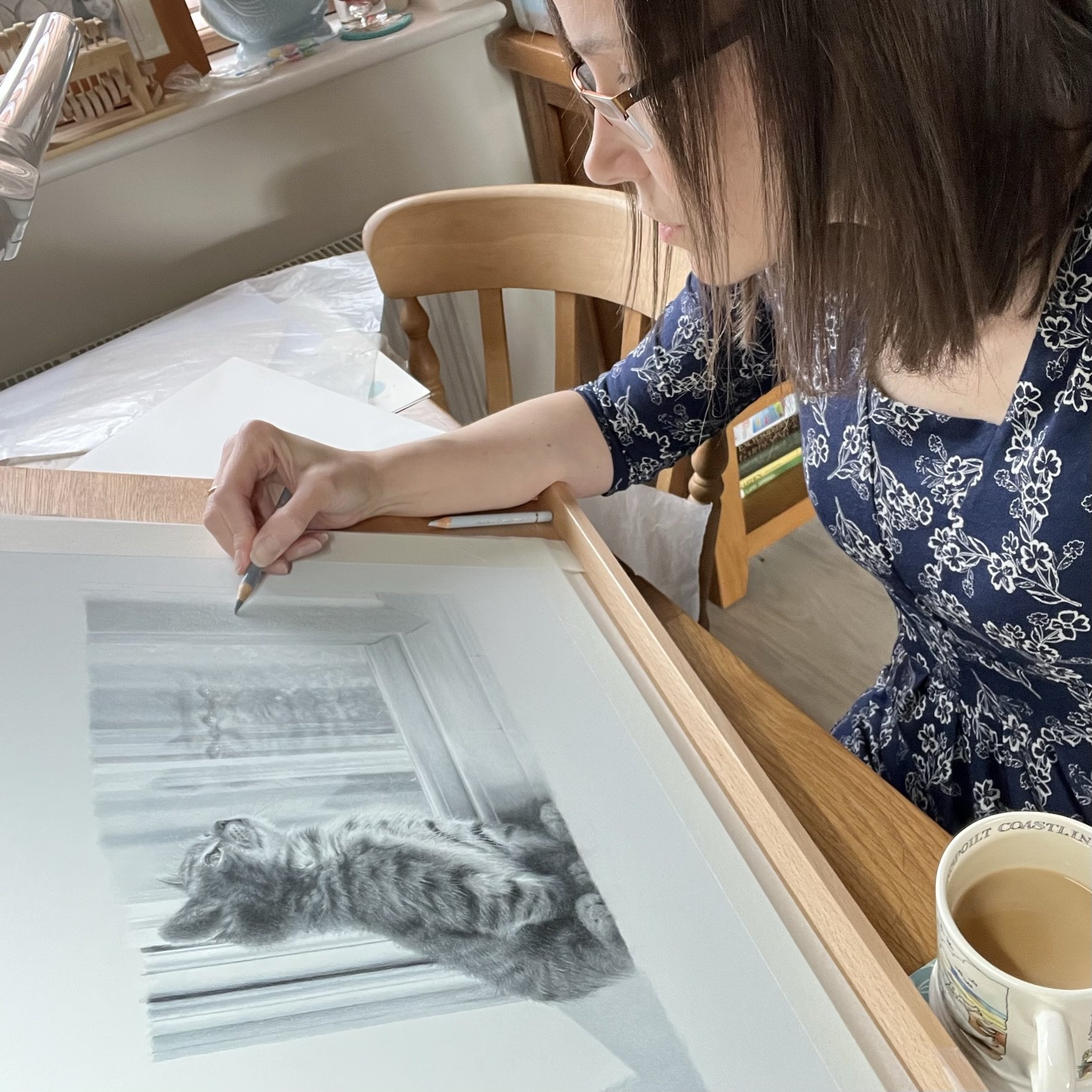Is It Time to Change Your Paper?
I never need to buy paper again. I have enough. If every piece of paper is transformed into an artwork, there are not enough hours in the day to use up all of my supplies. But here's the problem. I don't enjoy working on them all. From my experiments so far, I have three preferred surfaces and they just feel right.
How do you know what's right for you, without spending lots of money?
Signs It Might Be Time for a Change
You've mastered your current surface (or think you have!)
Your work looks like everyone else's
You're not enjoying the process anymore
You're fighting with the surface rather than flowing with it
You feel stuck in your artistic development
The Reality Check
Every artist produces different work on the same surface. Before rushing to try every paper variety available, consider this: the differences between similar papers (like various hot-pressed surfaces) may be subtle until you've developed your technical skills and preferences. Following a tutorial on Hahnemuhle Nostalgie? The techniques will be similar on other fine grained smooth papers. You don't need that specific pad.
I would categorise my experience with papers into types:
Film (e.g. Grafix drafting film, Polydraw)
Other smooth and plate (e.g. Botanical Ultra Smooth, Bristol Plate, Hahnemuhle Nostalgie)
Hot Press hard (e.g. Saunders Waterford, Hahnemuhle The Collection 100% cotton)
Hot Press bouncy (e.g. Derwent Lightfast)
Other Cotton and Vellum (e.g. Strathmore Bristol Vellum 500, Stonehenge)
Pastelmat
If you don't like Hahnemuhle The Collection 100% cotton hot press, you're unlikely to like other hard, durable hot press surfaces. If you love the texture of Pastelmat, you may like the way the cotton and vellum surfaces grip the pigment.
What really matters is understanding how different surfaces affect your work. Looking at these two cat portraits, can you can see how different papers influence the final piece? The silver tabby showcases the softer, ethereal effects possible with Pastelmat, while the brown tabby demonstrates the crisp detail achievable on hot-pressed paper. Can see a difference? Ah, well… that’s because it’s partly how I feel about these pieces as an artist. One I enjoyed drawing far much more than the other. One is, in reality, more than twice the size of the other.
Artist Profile - My Paper Journey
As someone who battles impatience and loves seeing quick progress, I've learned that the right paper can either fight against or work with your natural tendencies.
I grew up sketching in graphite, which taught me to appreciate the importance of value and form (shading and shapes) over all else. Now, I prefer using harder pencils for low-commitment mapping in sections, refining my line art early - checking those proportions and spotting areas of warm and cool tones. While I love detail, I need a surface that allows me to work efficiently - I'm not naturally patient and yes, I get bored drawing grass. I need tools to make it fun, and a paper that supports their use.
One of my biggest developmental leaps came from switching from Pastelmat to hot press for animal portraits. While Pastelmat is fantastic for fur effects, moving to hot press forced me to really understand how to build up fur without relying on the paper's texture for light over dark. This deeper understanding of layering and mark-making improved my work across all surfaces.
My landscapes can be more illustrative, like drawings, while my animal portraits need that soft, strokeable quality. One captures memories. The other character. I tend to use different surfaces for each.
Oh, and being an experimenter at heart means I need forgiving surfaces that allow for correction and adaptation.
The Physical Experience
There's something deeply personal about how a paper feels under your hand. Rising Museum Board offers a satisfying stability - substantial in its thickness without being intimidating. Strathmore Bristol Vellum 500 develops an almost canvas-like quality as you work, each layer adding to its character.
Pastelmat brings its own unique qualities - there's a delicacy to it that demands respect. While it can feel more high-maintenance (keeping it pristine requires care), it rewards you with its remarkable ability to hold multiple layers of pigment.
In common to all these surfaces - a slight pull to the pencils which loosely holds the pigment with little pressure.
These tactile experiences become part of your artistic journey. They're not just about technical capabilities - they're about finding surfaces that make you want to create.
Girl on a Swing
There’s a lovely canvas-like feel to this Strathmore Bristol Vellum 500 surface.
Making the Switch: Practical Advice
When to stick with your current paper:
You're still developing basic techniques
You haven't fully explored your current surface's potential
You're producing work you're happy with
You're enjoying the creative process
When to consider a change:
You're not enjoying the process
You are inspired by a new subject
You feel limited by your current surface
You're ready to push your technical skills further
Your artistic style has evolved
How to test new surfaces:
Start with small pieces
Complete a full piece rather than just samples
Try your usual techniques and subjects
Give yourself time to adapt
Stonehenge
100% cotton
Budget-conscious tips:
Buy loose sheets, if they are cheaper, and cut into sections
Consider swapping paper types, not just brands
Focus on one new surface at a time
Buy smaller sizes for testing
Consider similar papers in different price ranges
Remember that technique matters more than materials
Questions to Ask Yourself
Does your current paper support your natural tendencies as an artist?
Are you fighting against your surface or flowing with it?
When was the last time you felt excited to start drawing on it?
Does your paper choice align with your artistic goals?
Are you ready for a new challenge, or do you need to master your current surface first?
My Favourite Surfaces and Why
After all this experimentation, I've settled on three main surfaces, each serving a different purpose:
Rising Museum Board (4 ply)
Perfect for larger pieces where I want to use techniques like indenting for grass or removing pigment with tape for leaves. Its stability gives me confidence to work firmly when needed, but it still takes light layers beautifully. I love how it feels substantial under my hand - there's something satisfying about working on a proper board rather than a sheet of paper. While softer pencils like Luminance and Lightfast work beautifully from the start, I tend to reserve harder pencils for upper layers where they can add perfect finishing details.
Rising Museum Board (4ply)
100% cotton boards - slightly textured.
Strathmore Bristol Vellum 500
My current favourite for its versatility. The surface has just enough tooth to grip the pigment but remains smooth enough for detail. I love how it develops an almost canvas-like quality as layers build up. It takes all my pencil brands well and forgives my impatience - allowing for both quick progress and careful detail work. One quirk to note: the cotton fibres can occasionally send pigment in unexpected directions in very small areas. This isn't an issue for landscapes, but requires extra attention when working on precise details like facial features.
Strathmore Bristol Vellum 500 (2ply)
100% cotton - toothy finish.
Pastelmat
Despite my mixed feelings about its delicacy, nothing quite matches Pastelmat for achieving those soft, strokeable fur effects. The pigment sits differently on this surface, creating an almost painterly quality in the finished piece. I tend to reserve this for specific projects where I want that distinctive look, particularly animal portraits where capturing character is key.
Pastelmat
Cellulose fibres - a toothy, velvety surface
The common thread? All these surfaces offer enough 'tooth' to grip the pigment without demanding heavy pressure, while still allowing for the detail I love. They're forgiving enough for my experimental nature but stable enough for serious work.
Remember though - these are my preferences based on my style and way of working. Your perfect surface might be completely different. The key is understanding your own artistic tendencies and finding papers that support them.
If you’d like to hear more about the supplies I use regularly use, here’s a link to grab my essential kit list.
Pssst...
… you might see me teaching or experimenting on other surfaces - I have lots of supplies to get through! More seriously, while I have my favourites, I'm always happy to experiment and learn. Different surfaces can push us in new directions, and that's part of the joy of being an artist.







